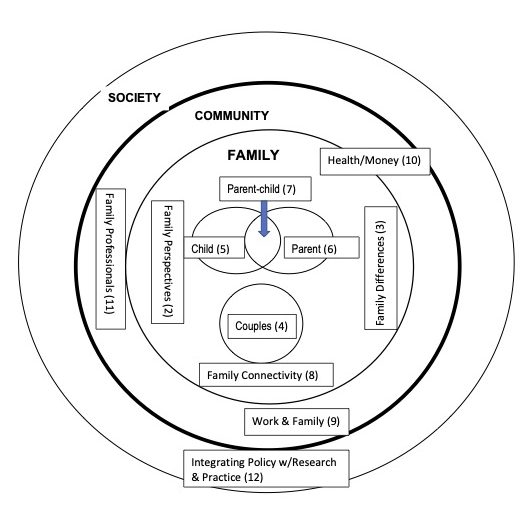“If you aren’t in over your head, how do you know how tall you are?”
―
To be honest, this wasn’t an easy book to write. I blame my students. (jk 😉)
Let’s face it. Technology and families is a really broad topic. Even when we refine “technology” to mean information and communications technology (ICT), and accept that investigations into it are only two to three decades old, the topic along with the technology itself is expansive and always evolving. This book was written to accompany a course I designed in 2017 for the University of Minnesota; a course that filled a knowledge and practice gap of future professionals. I created that course and now write its text with the knowledge that learners are/would be a) individuals and citizens, b) in families and have meaningful relationships, and c) practitioners (probably), researchers (possibly) and/or leaders in some type of human service on graduation, so I felt it was important to cover topics that would inform each of these paths.
I believe that THE most important skill moving toward that metaverse is the capacity to think critically about technology in our society, what our use means to our well-being, how we are influenced by technology, and how we can advocate for a technologically-just society.Creating and completing a usable product meant knowing when to stop writing — what to include, and what to leave out. The intent was to provide enough background to inform a contemporary understanding about the issues, and emphasize different perspectives to fuel critical thinking. The metaverse in 2040 offers a future only glanced at in this volume. I was guided in writing the book by what I felt students needed for their critical thinking and for use in their future work. This meant fighting a whole bunch of academic urges and silencing voices in my head and not including every new item that crossed my path daily. So, welcome to this relatively comprehensive journey into ICT’s use by and impact on individuals and families, and the societies that they live in. My students and I hope you find it valuable.
About the book
Intention for Use
Although this book was motivated by an undergraduate course, it can satisfy are variety of reader interests. It can be the basis of or part of other courses, selected chapters can supplement reading in courses on child development, family life, couple relationships, modern society, or what have you. Perhaps it will serve as some kind of a personal or professional reference. The learning activities and blog prompts and reading lists can work as stand alone items or as inspiration for teaching and learning. Please use it as best serves your interest.
How to navigate this open textbook
This book was designed and optimized to be read online. You can navigate through the book by clicking the Contents dropdown and selecting a chapter. You can also navigate by using the Next and Previous links in the red bar at the bottom of each page.
If you require offline access, you can download this book as a PDF or Epub. On the title page under the cover image, click the Download dropdown and choose the format you would like to download.
Layout of the chapters
The figure below illustrates relationships among the book’s chapters. After Chapter 1, an overview of our use of technology, we move to perspectives on the family (2) and family differences in technology use (3), then to specific components of couples (4), children and youth (5), parents (6), parents and children (7), and family connectivity (8), then to applications in families’ everyday lives: work & family (9), and health and financial interests (10). Also at the community level are the family professionals who provide services to families through education, therapy, and more (11). At the widest level is policy (12), which intersects all levels.

Chapter contents
Each chapter offers:
- Content, with chapter Insights, or key takeaways.
- References for everything cited in the chapter.
- Learning activities that promote critical thinking.
- Blog prompts. The course this course was built around included critical thought blogging. In our digital worlds, it’s important that professionals be able to write online thoughtfully and with technical precision; to have a point and be able to back it up. More about this is offered in the next section on Teaching the book.
- Additional reading and resources. More ways for readers to explore topics beyond the minimal treatment the book allows. There are readings, videos, news links and more.
The back of the book features a non-exhaustive list of additional books, websites, bloggers, journals that publish at the intersection of human development/family life and information and communications technology, and other related content. I’ve also included the oft-cited 50 Classroom Assessment Techniques from Angelo and Cross. These are fabulous tools on which to construct tailored activities for learning.
In addition to the content, then, I provide additional ways to understand it. Reading to learn isn’t enough; we need to experience topics in multiple ways, connect them to our interests and what motivates us, to make them stick. (See “Teaching the book” section that follows ).

